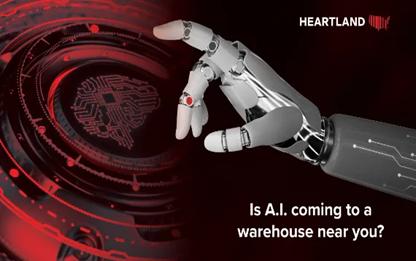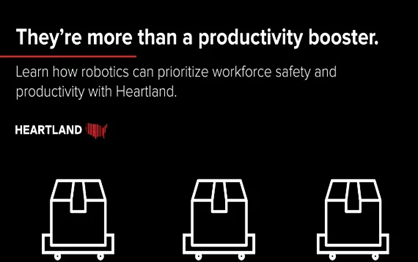
Can AI Be a Tool for Optimizing Terminal Operations?
Dec 14, 2023
The United States is one of the top importing countries in the world, spending about $3.38 trillion per year in imported goods ranging from clothing to food to oil. As a result, American ports play a leading role in supporting supply chains with in-demand products and materials. It is estimated that 99% of cargo enters the country through seaports, with some ports processing over 50 million shipping containers within a single year. Similarly, railroad ports handle up to 1.6 billion tons of raw materials and finished goods in a year. Bustling and vibrant, transportation ports often struggle with maintaining efficient terminal operations. The following three struggles have commonly plagued transportation ports:
- Congestion and Infrastructure Issues – The increasing volume of incoming cargo and the larger size of the ships carrying them have strained port infrastructure. This has resulted in longer turnaround times and a decrease in efficiency. Ships can spend up to 1.25 days waiting to be unloaded though the idle time might be larger for smaller ports. Competition for land space further complicates efficiency for seaports and freight lines alike since businesses are not able to expand toward land. Marine expansion is also difficult since it takes more resources and can harm the environment. As a result, terminal operations must navigate congested ports and accurately schedule incoming shipments to reduce idle time.
- Container Management - While the US is one of the top importers in the world, the same cannot be said for its exportation rates. As new shipments arrive, empty containers are often piled elsewhere around the port. Once again, because land space is already taken, businesses must store and track empty containers on the premises. This task can be costly, which is why many containers remain unaccounted for.
- Lack of Experienced Terminal Operations Managers – Ports require a large workforce to handle the cargo, and the lack of skilled workers has contributed to increased idle times, ultimately lowering customer loyalty and satisfaction. While automation has been encouraged as a viable solution to enhance worker performance, it is crucial that new systems be easy to integrate since the smallest amount of downtime can affect entire supply chains.
Despite these struggles, import rates are not expected to diminish. If anything, they will continue to increase as e-commerce and globalization reshape international markets. Therefore, innovative solution providers now recommend adding a new layer of efficiency to terminal operations. That’s where artificial intelligence comes in.
Why Artificial Intelligence
Artificial Intelligence (AI) is a branch of computer science that focuses on creating intelligent machines capable of performing tasks that typically require human involvement. AI algorithms analyze large amounts of data and identify patterns, making them invaluable tools for industries that deal with complex data sets. AI can be used in a variety of applications, such as natural language processing, image recognition, and decision-making. However, AI has also shown promising results in optimizing shipping and receiving operations.
Businesses leveraging AI can train the algorithm to distinguish meaningful data points within daily operations to generate accurate predictions and actionable insight. With the correct level of machine learning, AI targets bottlenecks and suggests ways to improve efficiency. It can also be used to predict demand and optimize the use of resources, such as cranes and trucks to improve terminal operations.
RELATED: AI IS ALREADY EMPOWERING WAREHOUSES. SEE HOW IN OUR BLOG POST.
8 Ways AI Empowers Terminal Operations
Artificial Intelligence is rapidly transforming the way supply chains operate, empowering terminal operations to process inventory more efficiently, safely, and sustainably. Effective solution providers combine AI with rugged, easy-to-use mobility systems to:
- Optimize Cargo Handling - AI algorithms can dissect large amounts of data on cargo manifests, shipping schedules, and weather forecasts to optimize handling, routing, and scheduling. By identifying bottlenecks and suggesting ways to increase efficiency, AI assists ports in elevating their throughput rates and decreasing turnaround times.
- Reduce Container Congestion – Dependable visibility systems with a layer of artificial intelligence can identify and track empty containers scattered across the port. As a result, transportation services can designate a space for empty containers and monitor exports and storage locations with accurate data to prevent congestion.
- Improve Worker Safety – AI-enabled sensors and security systems help mitigate workplace accidents by detecting potential hazards and improper material handling. Captured data facilitates future audits while prioritizing hazardous environments, so administrators can enhance worker safety protocols.
- Enforce Compliance – Terminal operations are subject to various regulations, such as environmental standards and worker safety requirements. AI consolidates data in a user-friendly platform so decision-makers can ensure standards are met. For example, ports may leverage AI-powered sensors programmed to monitor air and water quality to track greenhouse gas emissions and thus comply with environmental regulations. Moreover, automated data capture communicates with your terminal operating software to continue tracking stock information during shipping and receiving, securing dependable visibility before stock leaves the port.
- Enhance Customer Service – Manufacturers and retailers already leverage AI to track consumer preferences and purchase patterns. Likewise, terminal operations can leverage artificial intelligence to segment deliveries based on recorded demands and proximity. This can help accelerate shipping and track stock in real-time digitally, so teams can relay status to partners accurately.
- Lower Unnecessary Energy Consumption – Unsurprisingly, terminal operations tend to rank as large contributors to gas emissions and air pollution. Ports seeking to shrink their carbon footprint and operational expenses have used AI to capture energy consumption patterns and create optimization algorithms to schedule asset usage during off-peak hours and reduce idle time.
- Improve Resource Utilization – AI algorithms can be used to track everyday assets and predict demand to allocate assets efficiently. Consequently, teams improve capacity utilization and reduce turnaround times with the tools they need to execute mission-critical actions. Moreover, AI transposes data to your management system to display available teams and assign workers where they are needed most.
- Connect Ports with the Rest of the Supply Chain – Terminal operations require collaboration between various stakeholders, such as decision-makers, port authorities, and terminal operators, to function efficiently. Moreover, communication with manufacturers empowers the entire supply chain with accurate production estimates, so distributors and retailers can correctly forecast inventory levels and increase profitability. AI supports cross-country collaboration by providing real-time information on shipment status and automating routine tasks, such as cargo routing and scheduling. Transparent collaboration ultimately reduces the risk of delays and errors and improves overall supply chain efficiency.
Is Artificial Intelligence Right for Your Terminal Operations?
After considering the many benefits of artificial intelligence, it’s safe to say AI will continue to play a vital role in modern import transportation. Therefore, it is highly recommended that decision-makers evaluate their shipping and receiving workflows alongside an experienced solution provider. Contact Heartland to take the first step toward optimization and discover how AI can transform your terminal operations.




